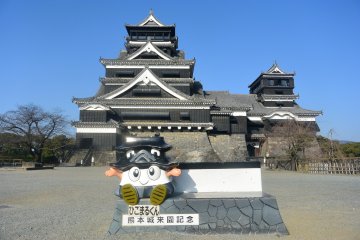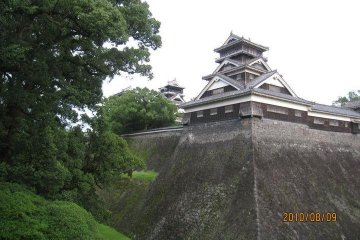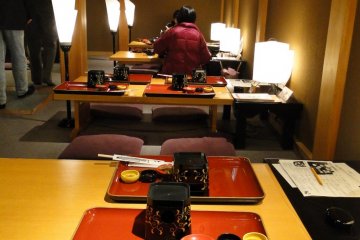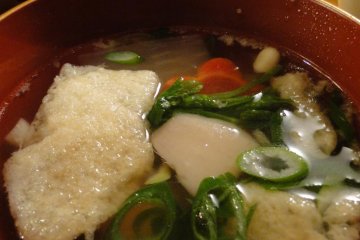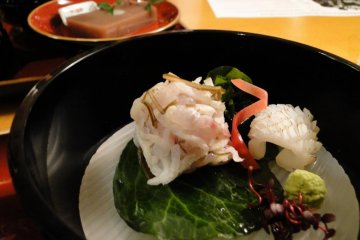Who wouldn’t want to be treated like royalty for a day? Alright, perhaps a full day is asking a bit much. How about for just one meal? The Honmaru Goten Palace Restaurant on the grounds of Kumamoto Castle won’t exactly be decking you out in gossamer threads but it will be serving you an unforgettable meal from the same menu used to feed visiting lords centuries ago.
The Honmaru Goten Palace Restaurant sits on the second floor of the beautifully-restored quarters of the lord of Kumamoto castle. Its entrance is tucked behind a screen and a steep staircase leads to an open balcony, where diners can look down on unsuspecting palace visitors. The space is limited and the atmosphere is austere (and COLD on winter days) but no one comes here for the décor. Rather, they come to experience a multitude of dishes that were actually served in the Edo Period (1603-1868) to visiting daimyo (feudal lords).
There’s only one meal option (¥3000) but the amount of food is more than enough to satisfy even the heartiest of appetites. At a glance, the presentation looks just like any other kaiseki-style lunch, but upon first bite, I quickly discovered that the tastes are tantalizingly familiar but not easily describable. (Thankfully, there is an English leaflet available to guide you through each course!) The appetizer plate boasted the typical sea bream sashimi but not even the dip was conventional – instead of soy sauce, diners in the Edo Period used an Irizake sauce of sake, plum juice and dried bonito flakes to flavor their fish. Our pinecone-shaped squid morsel was correspondingly dipped into tofuko miso, a mixture of poppy seeds and cloud ear mushrooms with hints of ginger.
The rest of the meal was just as unique, with dishes ranging from vinegar-soaked chrysanthemum petals and seasoned rice with carrots and mushrooms to ginkgo fruit tempura and spicy mustard stuffed into a lotus root, a specialty known as karashi renkon that is still popular in the prefecture today. One of my favorite dishes was the clear Kushiito soup, a broth of boiled meat and vegetables that was introduced to Japan by the Portuguese. And to finish off our meal, there was a sizable dessert of steamed sweet-bean jelly and yam.
Reservations are essential and cash is the only accepted form of payment, but the extra hassle is worth it to dine on a morsel of Japanese culinary history.




